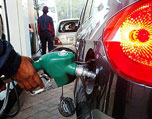India's annual oil products demand is forecast to grow 3.3 percent in the next fiscal year as Prime Minister Narendra Modi's focus on local manufacturing and economic expansion will raise consumption of industrial fuels.
The country is expected to consume 166.87 million tonnes of refined fuels in 2015/16 versus an estimated 161.57 million tonnes this fiscal year, according to a forecast by India's energy data body the Petroleum Planning and Analysis Cell (PPAC).
Modi's " Make in India" campaign to make the country a manufacturing powerhouse, plus a push on infrastructure projects and a likely average monsoon will boost demand for industrial fuels like diesel, bitumen and petroleum coke.
Indian economy is projected to grow close to 7.4 percent this fiscal year to March 31. It grew at 7.5 percent in December quarter from a year ago. In 2015/16, India's GDP is estimated to grow at 8-8.5 percent.
The growth in the demand for diesel, which accounts for more than 40 percent of refined fuel consumption in India, is set to rise 4.1 percent to 71.32 million tonnes while that of gasoline is expected to grow 7.2 percent to about 19.72 million tonnes.
Availability of cheaper credit after a second rate cut by Reserve Bank of India in as many months is expected to drive up the sale of vehicles.
India is expected to become the world's third-largest passenger vehicle market by 2019, from sixth place currently, consultant IHS Automotive estimates.
Demand for refined fuels mainly diesel will also get a boost if global oil prices remain stable at the current level of about $61 a barrel compared to about $115 in June last year.
In October last year, India ended subsidies on diesel sales and since then retail prices of the fuel have been reduced by about 15 percent.
India's kerosene demand is forecast to decline 3.7 percent as the federal government is encouraging use of liquefied petroleum gas, consumption of which is expected to rise 3.5 percent.
Use of naphtha and fuel oil is projected to fall by 5.3 percent and 4.9 percent in the next fiscal year, the data showed.
PPAC has released fuel consumption data up to January.
India's fuel demand projected to rise 3.3 per cent in 2015/16








Add Comment